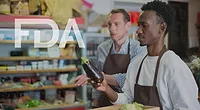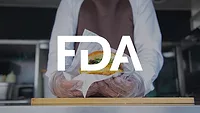FDA Releases 2022 Food Code

Credit: U.S. Food and Drug Administration (FDA)
The U.S. Food and Drug Administration (FDA) has issued the 2022 edition of the FDA Food Code, which provides guidance to state and local authorities and retailers to help mitigate foodborne illness risks at retail, as well as provides a uniform set of national standards for retail food safety.
The 2022 edition commemorates 30 years of the FDA Food Code in its current format. It represents FDA's best advice for a uniform system of provisions that address the safety and protection of food offered at retail and in foodservice, and while it is a model code that is not required, it has been widely adopted by state, local, tribal, and territorial (SLTT) agencies that regulate more than one million restaurants, retail food stores, vending operations, and foodservice operations in schools, hospitals, nursing homes, and childcare centers.
The 2022 Food Code specifically addresses food donations for the first time, which is part of the Biden-Harris Administration’s National Strategy on Hunger, Nutrition, and Health. To prevent food loss and waste across the food supply chain and help ensure that safe, quality food is accessible to those who need it most, the 2022 Food Code has clarified that food that is stored, prepared, packaged, displayed, and labeled according to Food Code safety provisions can be donated.
A full summary of changes to the 2022 Food Code can be viewed on FDA’s website. Significant changes include:
- Adding sesame as the ninth major food allergen to reflect the Food Allergy Safety, Treatment, Education, and Research Act (FASTER Act) of 2021
- Informing consumers, in writing, of major food allergens as ingredients in unpackaged food
- Adding labeling of major food allergens in bulk food that is available for consumer self-dispensing
- Creating new requirements for the allowance of pet dogs in outdoor dining spaces
- Revising the definition of intact meat, including enhancements to clarify time and temperature cooking requirements.
The 2022 edition reflects the input of regulatory officials, industry, academia, and consumers that participated in the 2020 biennial meeting of the Conference for Food Protection (CFP), which was held in 2021 due to the COVID-19 pandemic. Collaboration with CFP and FDA’s partners at the U.S. Department of Agriculture’s Food Safety and Inspection Service (USDA’s FSIS), the U.S. Centers for Disease Control and Prevention (CDC), and the Environmental Protection Agency (EPA) helps ensure the Food Code establishes sound model requirements that prevent foodborne illness and mitigate important food safety hazards in retail and foodservice facilities.
As of 2021, California is the only one of the 50 states that has not adopted some version of the Food Code. Of the states that have adopted the Food Code, 34 have adopted either the 2017 or 2013 versions, while 18 states have adopted the 2017 version. South Dakota is the state with the oldest Food Code—the 1995 version. Complete and widespread adoption of the 2022 Food Code as statutes, codes, and ordinances helps:
- Reduce foodborne illness risk within food establishments, protecting consumers and industry from potentially devastating health consequences and financial losses
- Create uniform standards for retail food safety that reduce complexity and better ensure compliance
- Eliminate redundant processes for establishing food safety criteria
- Establish a more standardized approach to inspections and audits of food establishments.
Members of FDA’s National Retail Food Team are available to assist regulatory officials, educators, and the industry in their efforts to adopt, implement, and understand the provisions of the FDA Food Code and the Retail Program Standards.
Looking for quick answers on food safety topics?
Try Ask FSM, our new smart AI search tool.
Ask FSM →








